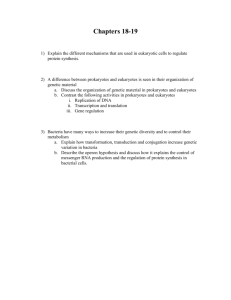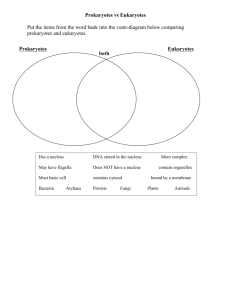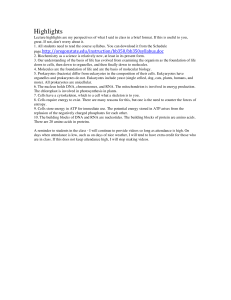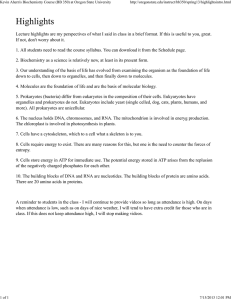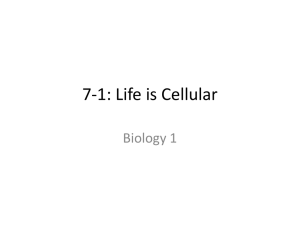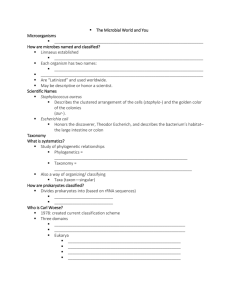Key Differences Between Eukaryotes and Prokaryotes
advertisement
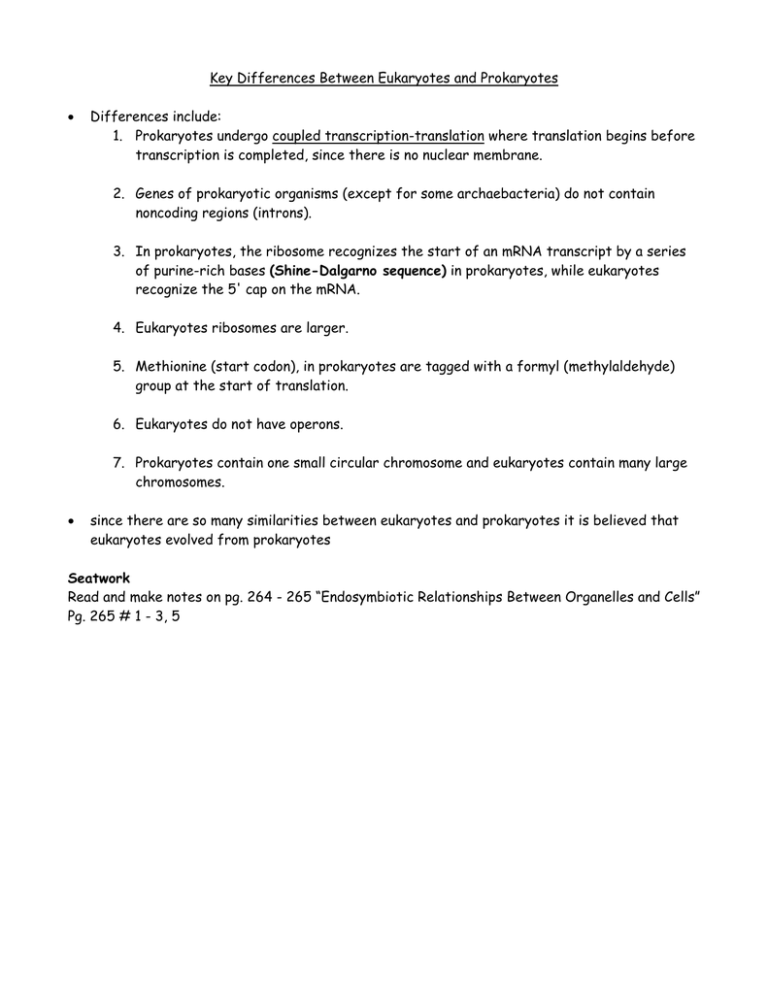
Key Differences Between Eukaryotes and Prokaryotes Differences include: 1. Prokaryotes undergo coupled transcription-translation where translation begins before transcription is completed, since there is no nuclear membrane. 2. Genes of prokaryotic organisms (except for some archaebacteria) do not contain noncoding regions (introns). 3. In prokaryotes, the ribosome recognizes the start of an mRNA transcript by a series of purine-rich bases (Shine-Dalgarno sequence) in prokaryotes, while eukaryotes recognize the 5' cap on the mRNA. 4. Eukaryotes ribosomes are larger. 5. Methionine (start codon), in prokaryotes are tagged with a formyl (methylaldehyde) group at the start of translation. 6. Eukaryotes do not have operons. 7. Prokaryotes contain one small circular chromosome and eukaryotes contain many large chromosomes. since there are so many similarities between eukaryotes and prokaryotes it is believed that eukaryotes evolved from prokaryotes Seatwork Read and make notes on pg. 264 - 265 “Endosymbiotic Relationships Between Organelles and Cells” Pg. 265 # 1 - 3, 5

